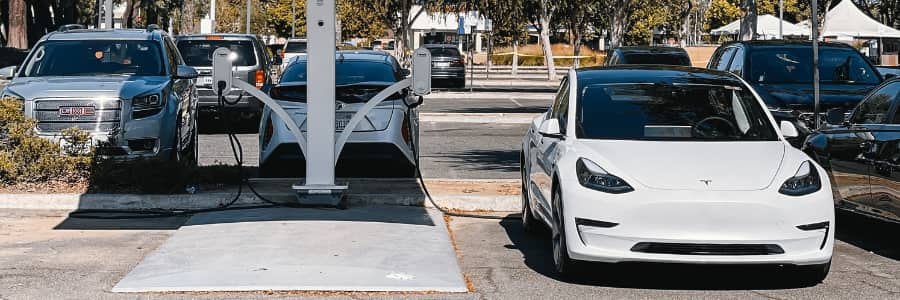Many of us have made similar observations about our electric vehicle (EV) on one or several occasions. If your car’s charge speed seems too low, the next step is understanding what the reason might be – and how to fix it.

Lower EV charge speed is sometimes due to a difference between car charging capacity and charger maximum power output.
Home charging stations typically have outputs of 7, 11, or 22 kW. A kW is short for kilowatt. It measures the flow of electrical current and is used to state the maximum power output of a charging station and charging rate of an EV. If there is a difference between the two, the charging speed is restricted by either the car or the charger.
For example, consider a Hyundai IONIQ 5 with an 11kW maximum charge rate. If you attach it to a 22kW charger, it will still only charge at a max of 11kW.
Let us imagine that you attach three identical Hyundai Ioniq 5 cars with a 77.4 kWh battery capacity. We plug them in with empty batteries to a 7.4 kW, a 11 kW, and a 22 kW charger, respectively.
Your time to full charge would be:
Please note that are many other electrical details that can affect charging speed.
See here for an overview and a good way to calculate your likely charge speed.
Battery State of Charge (SoC) can influence charging speeds, sometimes causing an electric car to charge slower. SoC essentially represents how close to fully charged your car battery is in percentages.
Unlike gas-powered vehicles that refuel at a consistent rate, electric vehicles equipped with lithium-ion batteries see varying charging speeds based on their SoC. EV batteries tend to charge faster at lower SoC (e.g., 20%) compared to higher ones (e.g., 80%). As a result, charging an EV from 0 to 80 percent can be quicker than charging it from 80 to 100 percent.
This charging pattern is not only a result of battery chemistry but also serves as a protective measure to prevent overheating and preserve the battery. Some EV manufacturers advise against regularly charging their EVs above 80 percent.
Battery temperature plays a crucial role for charging speeds. EV batteries operate most efficiently around 20°C. Most EVs are equipped with a Battery Management System (BMS) that monitors and adjusts charging based on temperature. If temperatures deviate significantly from 20°C, the BMS reduces charging speed to protect the battery.
Seasonal changes also impact charging times. For example, cold weather can lead to longer charging times, although pre-heating the car can help speed up charging in colder weather.
Charging in hot weather doesn’t impact charge speeds as significantly as cold weather, but can still pose challenges. The primary concern here is battery overheating. If there is a risk of overheating, the BMS system may reduce charging speeds and increase cooling to maintain optimal temperature levels.

You might not even think that using a car while it’s charging has any impact, but in fact, it can visibly add to the charging time, depending on how it’s used.
While you obviously can’t drive a car while it’s plugged in, staying inside the vehicle and using heating or air conditioning, the sound system, or lights, for example, can increase energy consumption and divert some of the energy from charging, adding to charging times.
Although most software updates can significantly improve electric car charging and increase the charging speed, the opposite might occasionally occur. In such cases, it can often be difficult to uninstall updates, and you may have to deal with the problem until the new software update nullifies the issue.
On the hardware side, EV batteries can cause issues over time if they are not maintained correctly. However, with a lifespan of up to 10-15 years, they can sometimes outlast the vehicle. That said, batteries do age and lose some of their capacity in the process. As they age, the resistance inside batteries also increases. This means that the power they can accept decreases, slowing down the charging rate.
It’s worth noting that EV batteries are often designed with an excess capacity to act as a buffer against aging.

To increase your electric car’s charge speed, consider the following strategies: